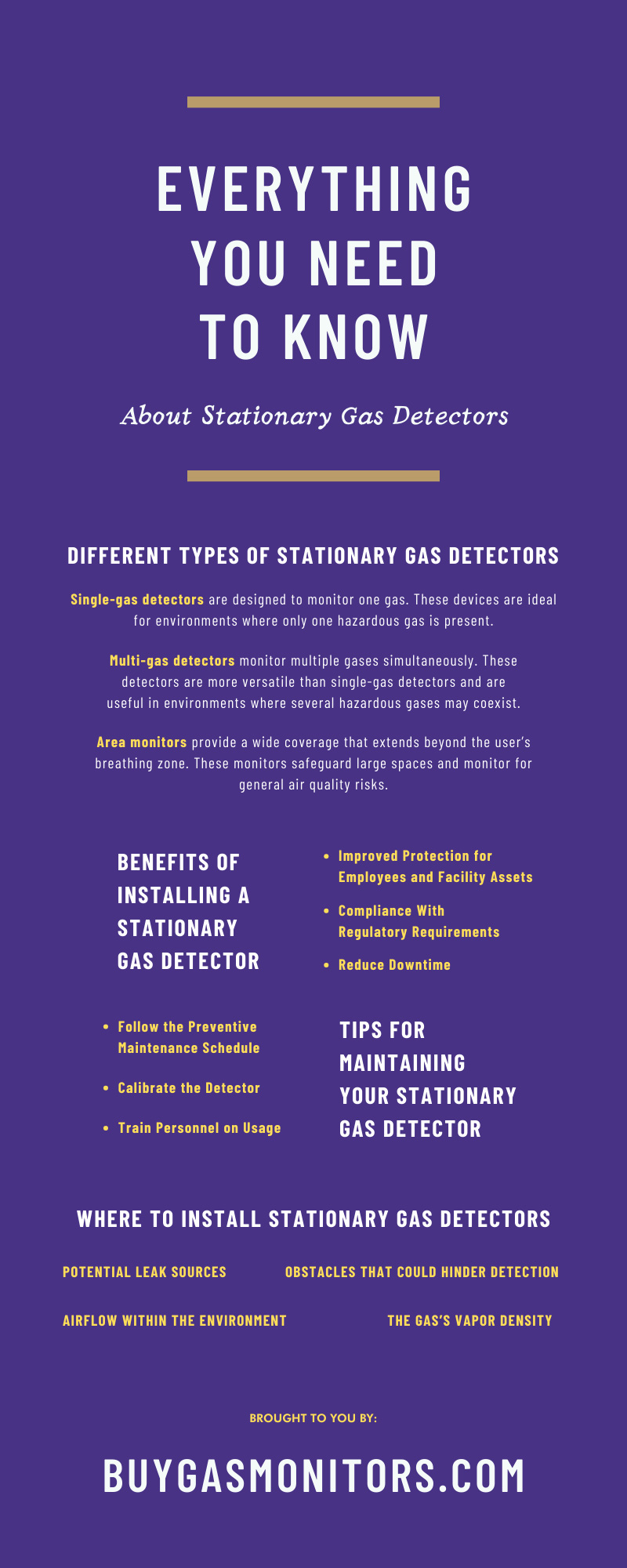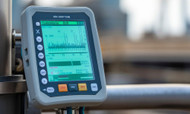Everything You Need To Know About Stationary Gas Detectors
Posted by William Kimmell on 11th Oct 2023
Stationary gas detectors save lives and prevent devastating accidents in various industries. These devices monitor the environment to detect the presence of potentially dangerous gases. Then, they promptly alert on-site personnel before the situation escalates. Learn everything you need to know about stationary gas detectors, including their uses, types, benefits, and tips for selecting the right device.
Uses for Stationary Gas Detectors
A stationary gas detector continuously monitors the concentration of gases in the surrounding environment. These detectors are common in industrial facilities, plants, and laboratories, where toxic or combustible gases may be present.
The primary purpose of stationary gas detectors is to ensure the safety of on-site personnel and assets from hazardous gas leaks. Early detection allows for appropriate and timely responses, such as shutting down equipment, evacuating personnel, and mitigating damage.
Different Types of Stationary Gas Detectors
The different types of stationary gas detectors have varied capabilities for gas detection:
- Single-gas detectors are designed to monitor one gas. These devices are ideal for environments where only one hazardous gas is present.
- Multi-gas detectors monitor multiple gases simultaneously. These detectors are more versatile than single-gas detectors and are useful in environments where several hazardous gases may coexist.
- Area monitors provide a wide coverage that extends beyond the user’s breathing zone. These monitors safeguard large spaces and monitor for general air quality risks.
Fixed gas monitors can assess a wide range of gases that pose hazards to nearby workers. This includes carbon monoxide, hydrogen sulfide, and sulfur dioxide, which can cause severe health problems, even at low concentrations. Detectors also monitor combustible gases such as methane, propane, and hydrogen, which pose a significant explosion risk.
Benefits of Installing a Stationary Gas Detector
Stationary gas detectors provide an essential layer of protection in facilities with a risk of gas leaks. These detectors are permanent and offer real-time monitoring of various gases in the workplace. Check out these key benefits of installing a stationary gas detector in your facility:
Improved Protection for Employees and Facility Assets
Installing a stationary gas detector improves safety for employees and assets within a facility. The detector serves as an early warning system, allowing for prompt responses to stop or prevent potentially disastrous gas leaks.
Compliance With Regulatory Requirements
Additionally, fixed gas monitors ensure compliance with regulatory requirements in your respective industry. This compliance not only safeguards against legal repercussions but also reinforces your company's reputation for maintaining high safety standards.
Reduce Downtime
A stationary gas detector can significantly reduce downtime from unforeseen gas-related disruptions. By promptly detecting and addressing such issues, these detectors enable continuous, smooth operations in your facility.
Selecting the Right Stationary Gas Detector
You’ll have to consider many factors to find the best device for your facility. Firstly, identify the target gases that are specific to your operations. This involves understanding the nature of your work and the hazardous gases that could be present in your work environment.
Next, remember that manufacturers create stationary gas detectors to operate under set conditions, so identifying environmental factors can help you determine the ideal device. Assess temperature, humidity, and the presence of dust or other substances that might interfere with the gas detector's operation.
Lastly, consider the installation and maintenance requirements of the gas detector, as well as the product's reliability. A reliable product offers long-term effectiveness. Consult a professional in gas detection technology to assist with installing and calibrating the detector.
Tips for Maintaining Your Stationary Gas Detector
Like all other equipment in your business, gas monitors require regular maintenance to function. Maintenance typically includes inspections for damage or malfunctions, sensor checks, and calibration.
Follow the Preventive Maintenance Schedule
Adhere to the manufacturer's recommended maintenance schedule to get the most out of your gas detection equipment. Manufacturers create maintenance schedules based on extensive product testing and knowledge, so following the suggested timeline will keep your detector in top shape.
You can appoint a small team of employees to periodically inspect and clean the detector's components. Accumulated dust, debris, and other foreign substances can interfere with the detector's abilities. Regular checks will allow you to spot any issues and prevent malfunctions down the line.
Calibrate the Detector
Calibrate your gas detector at regular intervals, such as every few months, to ensure its accuracy. Over time, sensors may drift from their factory settings due to prolonged use or environmental factors, leading to incorrect readings. Regular calibration will rectify these issues and ensure your detector provides accurate readings of gas levels.
Replace Worn or Malfunctioning Parts ASAP
Replace parts subject to wear and tear, such as filters and battery kits, as needed. Consumable parts have a finite lifespan, and their performance will degrade over time. Timely replacements will prevent sudden breakdowns and ensure reliable performance.
Train Personnel on Usage
You should train a team of employees on correct usage and response protocols for gas detection devices. These operators will become familiar with the technology and be able to recognize unsafe gas levels. This will also ensure that your entire team can respond promptly and appropriately in the event of a gas leak.
Where To Install Stationary Gas Detectors
Another essential thing to know about stationary gas detectors is that their location affects how well they sense target gases. Place detectors close to the potential source of a leak while maintaining a permissible distance. Consider the following factors when installing your gas detectors:
- Potential leak sources
- The gas’s vapor density
- Airflow within the environment
- Obstacles that could hinder detection
For monitoring gases lighter than the atmosphere, place detectors near the ceiling or roof; these gases rise because of their low density. Gases three to four times heavier than air sink, so install detectors near the floor.
In environments with ventilation or air circulation, consider the airflow direction before installing stationary gas detectors. Position them in an area in the path of the airflow.
Avoid placing detectors near open windows, doors, or ventilation fans where the gas concentrations could dilute and cause inaccurate readings. Remember, strategic placement can boost the efficiency of fixed gas detectors.
Finally, anchor the detector to a stable surface, like a wall. Do not attach the detector to a surface that vibrates since this can harm the device’s performance.
Stationary gas detectors provide real-time monitoring of potentially hazardous gases and promptly alert nearby personnel to take necessary action. Selecting the right detector depends on your application, target gases, and environmental conditions. Regular maintenance and correct installation can ensure the detector's longevity and functionality, contributing to a safer workplace. Browse our selection of fixed gas detectors at TG Technical Services to find the right tools for your facility.


